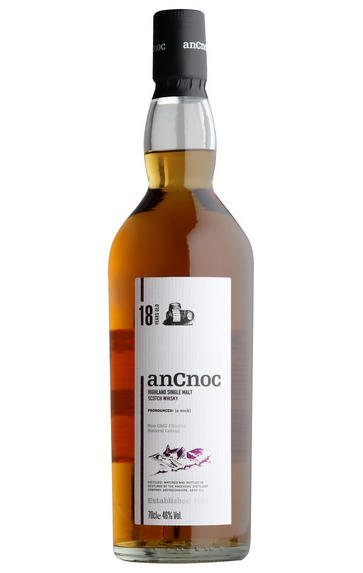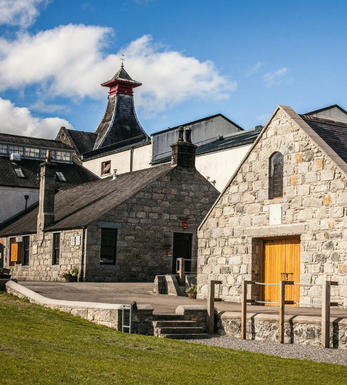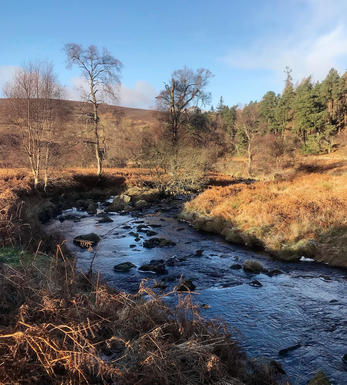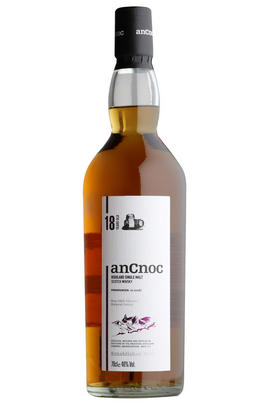
Critics reviews
A big, rich, moderately mature, bourbony oak nose with hints of cereal, dusty spice, orange and dunnage. Juniper, honey and coffee; oak becomes luscious and creamy.
Palate
Crisper and sharper than the nose with barley, citrus and a light herbal note. A lot less oak! But still adding structure. Coffeed and gritty on the middle as the tannins emerge.
Finish
Long and herbal, dry finish as the citrus scythes its way through the oak. Peppery spice and coffee after-taste.
Comment
A whisky of two halves! Big and oaky on the nose but crisp and fresh on the palate.
Chris Goodrum - Whisky Magazine Issue 126 Nose
Sweetened porridge and dark sugar caramel, but with a slightly acidic note to it. Light, creamy banoffee (especially the toffee), an unexpected floral note.
Palate
Bold, sweet malty notes, a bitterness reminiscent of dark chocolate or black coffee, but without the fullness of flavour. The warmth lasts after the flavour has faded.
Finish
The bitterness from the palate continues and deepens to a malty, beer-like note with a hint of the chocolate cream.
Comment
A neat, unfussy whisky with good warmth and a clean, malty flavour.
Sara Smith - Whisky Magazine Issue 126
About this SPIRIT

Knockdhu Distillery, Highland
John Morrison bought the Knock estate in 1892 from the Duke of Fife .The discovery shortly afterwards of several springs of pure, clear and highly palatable water on the southern slopes of Knock Hill impressed him so much, that one month later, he laid out the plans to build a distillery and Knockdhu was born.
The location, close to the Great North of Scotland railway line and just a few miles from the peat and barley-rich region of Moray, could not have been more suited to such a venture. The railway station on the Great North of Scotland line run between Aberdeen and Elgin. This railway does not exist anymore. Foundations were laid the following year and the distillery, built using eye-catching local grey granite, began production of its first cask in October 1894.
Despite the closure of the railway branch line in the late 1960s, production of whisky was sustained until 1982 when Knockdhu became one of a dozen distilleries owned by Scottish Malt Distillers to be closed in the face of declining demand for whisky worldwide.
In 1988 Inver House acquired the distillery and in 2000 the malt was re-branded as An Cnoc, to save any confusion with the similarly named Knockando, which is owned by Diageo.
Blends are however, still a very important part of the day to day business of the distillery with a number of whiskies still benefiting from Knockdhu’s input.

Highlands Whisky
Maybe because it is the largest geographical area, the Highlands is also the hardest Whisky region to pin down stylistically. For this reason it is easiest not to consider the Highlands as one large are, but as 4 smaller and much more distinct ones.
North-Highland malts tend to be light bodied, delicate whiskies with complex aromas and a dryish finish sometimes spicy, sometimes with a trace of salt. Northern Highland distilleries are almost all coastal. The most northerly is Old Pulteney, situated about as far north as you can go in Wick, which produces a delicious, fragrant, dry whisky.
Working south along the route of the A9, next comes Clynelish at Brora (built in 1969, beside an earlier distillery who’s whiskies are known as Brora) - a sophisticated and complex whisky older expressions are very highly regarded and the malt deserves to be better known. Perhaps the reason that it is rarely seen as a distillery bottling is that it’s malt is a key component of Johnnie Walker.
The best known of all the Northern Highland malts is Glenmorangie. Glenmorangie, is made at Tain on the Cromarty Firth, and is the most popular malt in Scotland. Over the last decade Glenmorangie pioneered the now often copied process of wood finishing. Althoght this process is not universally popular; it transformed the company’s commercial success.
The Eastern Highlands produce a number of whiskies that can be confused with those of Speyside. In the north of the region close to the southern border of Speyside, whiskies which are smooth, sometimes with a little smoke, malty-sweet, such as Macduff, Ardmore, Glen Garioch and Knockdhu are made.
Further south is Fettercairn, and Glencadam, at Brechin, which produces an unusual creamy, fruity malt. The area between the Moray and the Tay has two distilleries of note; Royal Lochnagar and Glendronach. The first is a wonderfully smooth, rich whisky made in the shadow of the mountain of the same name in a distillery established in 1825 The second is also luscious and often sherried.
In the Western Highlands there only two distilleries on the mainland those of Oban and Ben Nevis. Oban is a perfect, sheltered harbour makes it the principal seaport for the Isles and the capital of the West Highlands. Its whisky has a misty, briny character, with a background of heather and peat.
The Oban whisky stills used are among the smallest in Scotland; the cramped nature of the site is attested to by the odd position of the worm tubs, fed by unusually short lyne arms, and nestled in the ‘vee’ between the roofs of the still house and an adjoining building.
The whiskies of the Central Highlands are a mixed bag. Generally they are lighter-bodied and sweeter that their cousins to the east, but not as sweet as Speysides.
The Central Highland single malts used to be known as 'Perthshire Whiskies'. Most are found along the valleys of the Tay and its tributaries. The furthest north is Dalwhinnie, which is almost in Speyside indeed; it is at the very head of the river, over sixty miles from Grantown-on-Spey.
Blair Athol and Edradour whisky distilleries are both near Pitlochrie. The former was founded in the 1790s and was substantially rebuilt in 1949 Edradour is the smallest distillery in Scotland - a happy survivor of the days of 'farm distilleries' - yet produces a clean, fresh, attractive and justly popular whisky.
South again is Aberfeldy distillery, on the edge of the pretty town of the same name. Glenturret, at Crieff is one of the claimants to being the oldest distillery, although it was dismantled in the 1920s and is much changed.



Buying options
Add to wishlist
Description
The anCnoc 18 Year Old has matured in Spanish oak ex-sherry casks and American oak ex-bourbon barrels and has been bottled in its most natural form, neither chill-filtered nor coloured. As a result this dram may develop a light haze with the addition of water or if kept at a cold temperature. This haze is a natural characteristic of whisky that is non chill-filtered.
Nose: Gentle spices and intense sweetness of dried fruits are topped with chocolate, ripe oranges and oiled leather.
Taste: Full-bodied and bold, aromatic spices, fruit loaf and candied lemon are followed by a surge of vanilla, honey and caramel.
The finish transforms from peppery and hot to deliciously sweet and smooth.
spirit at a glance
Delivery and quality guarantee